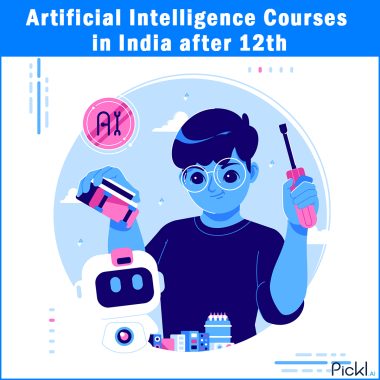Summary: Generative AI creates new data from patterns in existing data. This guide explains what is generative AI—its types, applications, benefits, and challenges, highlighting its significance in 2025 across various industries.
Introduction
Generative AI is one of the most exciting advancements in artificial intelligence today. But what exactly is it, and why should you care about it? In this guide to generative AI, we’ll break down this complex technology in simple terms so that anyone, regardless of their technical background, can understand its potential and importance in 2025.
Key Takeaways
- Generative AI creates new content like text, images, and music.
- It uses models such as GANs, VAEs, and autoregressive models.
- Generative AI boosts creativity and personalization.
- Technology is rapidly growing, with vast applications in many industries.
- Ethical concerns and challenges like bias and data dependence persist.
What is Generative AI?
Generative AI refers to a branch of artificial intelligence that creates new content, such as text, images, music, or even videos, that resemble real-world data. Unlike traditional AI, which is designed to analyze or process existing data, generative AI builds something new from scratch.
For example, generative AI can create realistic pictures of people, write stories, compose music, and even generate new medical data. It is used in entertainment, healthcare, marketing, and more industries.
The technology behind generative AI involves complex models that learn patterns from massive amounts of data and use these patterns to generate new, human-like outputs. Some common applications include:
- Natural Language Processing (NLP): Creating human-like text for things like chatbots or writing assistants.
- Computer Vision: Generating images and videos from text descriptions or enhancing image quality.
- Music and Art: Producing original compositions and artworks.
Types of Generative Models

Generative models in Machine Learning and Artificial Intelligence are algorithms that learn to generate data similar to a given dataset. They have various applications, including image generation, text generation, speech synthesis, and more. Here are some types of generative models:
Autoencoders
Autoencoders consist of an encoder and a decoder network. They learn to compress input data into a lower-dimensional representation (latent space) and then decode it back to the original data. Variational Autoencoders (VAEs) are a popular variant that introduces a probabilistic component to the latent space.
Generative Adversarial Networks (GANs)
GANs consist of two neural networks, a generator and a discriminator, which compete with each other during training. The generator tries to generate indistinguishable data from real data, while the discriminator tries to distinguish between real and fake data. GANs are widely used for generating images, videos, and other data types.
Variational Autoencoders (VAEs)
VAEs combine the concepts of autoencoders and probabilistic modelling. They model the latent space as a probability distribution and use variational inference to generate data. VAEs are often used to create images and perform tasks like image inpainting and style transfer.
Boltzmann Machines
Boltzmann Machines are a stochastic neural network with visible and hidden units. They model the joint probability distribution of the data. Restricted Boltzmann Machines (RBMs) are a simplified version often used for dimensionality reduction and feature learning.
PixelRNN And PixelCNN
These models generate images pixel by pixel. PixelRNN models generate pixels sequentially, while PixelCNN models use a convolutional neural network to model each pixel’s conditional distribution.
Transformative Models
Models like the Transformer architecture are not inherently generative, but they can be adapted for generative tasks. Variants like GPT (Generative Pre-trained Transformer) can generate human-like text.
Flow-Based Models
Flow-based generative models model the data distribution as a series of invertible transformations. They can generate data by sampling from a simple distribution (e.g., Gaussian) and applying the transformations.
Normalizing Flows
Normalizing flows are generative models that transform a simple distribution into a complex one. They are used for tasks like density estimation and generating data.
Markov Chain Monte Carlo (MCMC) Methods
MCMC methods, like Gibbs sampling and Metropolis-Hastings, can be used for generative modelling by sampling data points from a target distribution.
Hybrid Models
Some generative models combine multiple techniques, such as VAEs and GANs (e.g., VAE-GAN) to improve sample equality and diversity.
Generative Models Examples
Generative models find applications in a wide range of domains. Here are some Generative models in Machine Learning Artificial Intelligence examples of use cases that I have acquired for you to understand the algorithm better:
Variational Autoencoders (VAEs)
Imagine you have a box that takes an image as input (encoder) and compresses it into a smaller representation (latent space). Then, another box (decoder) uses this compressed version to rebuild an image (hopefully similar to the original).
VAEs are like this but add a twist: the latent space is forced to follow a simple probability distribution. This allows the decoder to copy existing images and generate new ones similar to the training data but with variations.
Generative Adversarial Networks (GANs)
This is like a competition between two AI models. One (generator) tries to create new, realistic data (like images of faces). The other (discriminator) tries to tell the difference between real data and the generator’s creations.
As they compete, the generator gets better at creating realistic fakes, and the discriminator gets better at spotting them. This adversarial process pushes both models to improve, ultimately resulting in the generator creating highly realistic new data.
Autoregressive Models
Imagine a model that predicts the next word in a sentence, one by one. This is an autoregressive model. This idea can be used for other data types, like music or images.
The model can create new data sequences that resemble the training data by starting with a random beginning and then predicting the next element based on what came before.
How Does Generative AI Work?

The underlying mechanisms for how generative AI works can vary depending on the specific generative model being used, but I’ll provide a high-level overview of the common principles involved:
Data Representation
Generative AI typically works with data representations such as images, text, audio, or other structured or unstructured data.
Learning From Data
Generative models are trained on a dataset containing examples of the data type they should generate. This dataset is crucial for the model to learn the data’s patterns and characteristics.
Architecture Selection
Different generative models use various neural network architectures. For instance, GANs use a generator-discriminator architecture, while VAEs use an encoder-decoder architecture.
Training
During training, generative models learn to capture the underlying probability distribution of the training data. They adjust their parameters (weights and biases) through optimization algorithms like stochastic gradient descent (SGD) to minimize the difference between generated and real data.
Latent Space
Many generative models work in a latent space, a lower-dimensional space where data is represented in a more compact form. For example, VAEs model a probability distribution over this latent space.
Sampling And Generation
Once trained, generative models can sample from their learned probability distribution in the latent space or directly generate data samples consistent with the patterns learned during training.
Generative AI models can be further fine-tuned and customized for specific tasks, data domains, or applications. They are used for tasks ranging from image and text generation to speech synthesis, recommendation systems, and more. They can create new and diverse content based on the patterns they’ve learned from existing data.
Why is Generative AI Important?
Generative AI has revolutionized how we create content and interact with technology. Its applications are vast, and here are a few reasons why it matters in 2025:
- Creativity Boost: Generative AI helps artists, writers, and musicians by providing them with tools to create new content quickly, saving time and effort.
- Personalized Experiences: AI can generate tailored content, such as personalized recommendations in streaming services or custom marketing materials for businesses
- Efficiency in Industries: In fields like healthcare, generative AI can help generate synthetic data for medical research, speeding up the development of new treatments and drugs.
- Problem-Solving: Generative AI can be used for training, design, and testing by simulating real-world scenarios, offering solutions in areas like autonomous driving, engineering, and even climate modeling.
Generative AI in 2025: Market Growth and Opportunities
The generative AI market is growing rapidly. According to projections, the global market size is expected to grow from USD 20.9 billion in 2024 to USD 136.7 billion by 2030, at a compound annual growth rate (CAGR) of 36.7%. This incredible growth shows just how transformative generative AI will be across industries in the next few years.
Challenges Of Generative AI
Generative AI faces several challenges, despite its significant advancements. Researchers and practitioners are actively working on these limitations. Here are the key challenges of generative AI:
- Mode Collapse: Limited diversity in outputs, especially in GANs.
- Training Instability: Sensitive to initial conditions and hyperparameters, complex to stabilize.
- Evaluation Metrics: Difficult to measure quality, with existing metrics having limitations.
- Data Dependence: Requires large, diverse datasets for high-quality outputs.
- Interpretability and Control: Hard to understand and control what models learn.
- Ethical Concerns: Potential misuse for creating harmful content like deepfakes.
- Generalization to Unseen Data: Struggles with data that deviates from training data.
- Computational Resources: Requires substantial computational power, limiting accessibility.
- Privacy Concerns: Risk of models memorizing sensitive data from training.
- Bias and Fairness: Inheriting biases from training data, leading to unfair outputs.
- Scalability: Challenges with handling large data or complex tasks.
- Energy Consumption: High energy use in training large models, raising environmental concerns.
Benefits Of Generative AI
Generative AI offers numerous benefits across various industries, enabling creative professionals, businesses, and researchers to unlock new possibilities and enhance productivity. Here are some of the key benefits:
- Creative Possibilities: Generative AI can design new products, generate realistic images, and compose music, empowering innovation in marketing and entertainment.
- Data Enhancement: It generates synthetic data when real data is difficult or expensive to gather, improving machine learning models and research outcomes.
- Content Creation: With generative AI, high-quality text, audio, video, and images can be produced, aiding content creators in various industries.
- Image and Video Synthesis: Generative models like GANs can create realistic images and videos, benefiting sectors such as gaming, entertainment, and virtual reality.
Text Generation: Models like GPT-3 generate coherent, contextually relevant text for use in chatbots, content creation, and automated writing.
Closing Words
In conclusion, generative AI is a powerful tool that can change industries, enhance creativity, and solve complex problems. As the market grows, its applications will only expand, offering new opportunities for businesses and individuals alike. By understanding the basics of generative AI, you can better appreciate its role in shaping the future of technology.
As the field grows, professionals can further deepen their understanding of AI by exploring data science courses, like those offered by Pickl.AI. These courses offer the perfect opportunity to dive into machine learning and generative models, crucial components of AI.
Data science skills will equip you with the tools to work with technologies like generative AI, opening up new career opportunities and enhancing problem-solving capabilities across industries. The future is bright for those prepared to embrace this revolution in AI.
Frequently Asked Questions
What is Generative AI?
Generative AI is a branch of artificial intelligence that creates new content, such as text, images, and videos, mimicking real-world data. It’s used in various industries, such as entertainment, healthcare, and marketing.
How do Generative Models work?
Generative models learn from massive datasets and capture the underlying patterns to create new data. They use techniques like neural networks to produce realistic, human-like outputs.
Why is Generative AI important?
Generative AI boosts creativity, personalizes experiences, improves industry efficiency, and helps solve complex problems. It’s rapidly growing, especially in 2025, and it will shape the future of content creation and data science.



